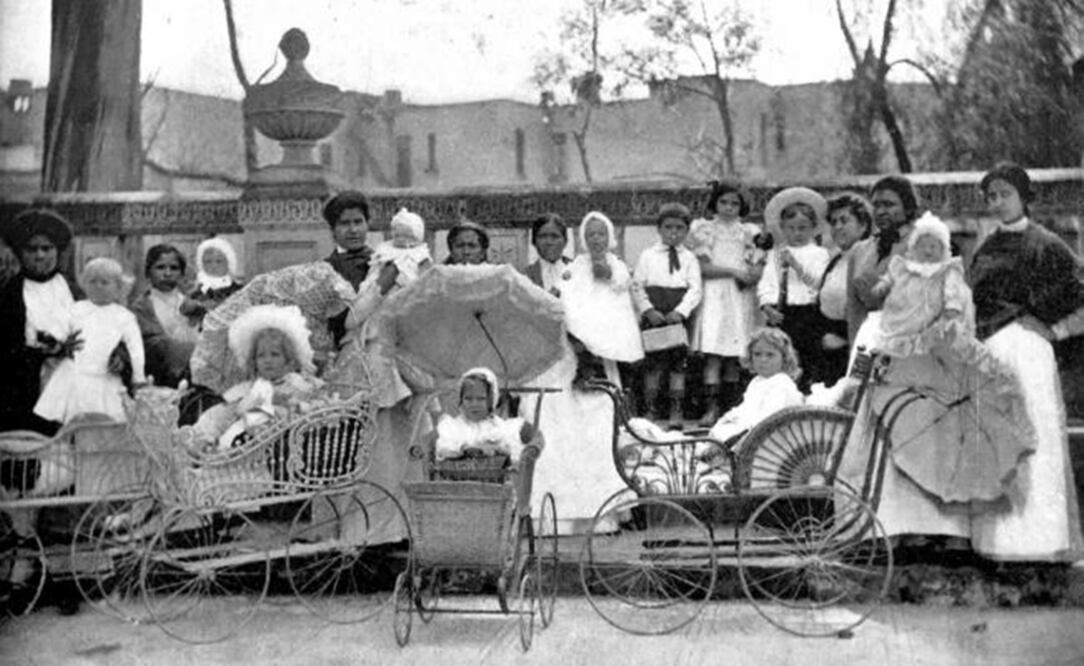Más Información

Harfuch sostiene llamada telefónica con el ministro de Seguridad canadiense; acuerdan fortalecer Plan de Acción Canadá–México

Corte perfila iniciar 2026 con tema del aborto; plantea anular reducción de 12 a 6 semanas para interrumpir el embarazo

Jueza cancela audiencia del caso María Amparo Casar; FGR deberá continuar acusación ante juez del Reclusorio Norte
Rosa was always surrounded by children. Since she was very little, she was left in charge of some of her siblings and once she moved to Mexico City, in 1968, she got a job taking care of children. She was only 12. She doesn't remember exactly how it happened but soon she found herself looking after a 2-month-old baby.
“That's when I became a nanny, although I did many other things, as the help. I spent 12 years in that house in the Narvarte quarter. The first one was Alex, I met him when he was two months old. Then his little brother came along. The day I left the house, I didn't want to see them because it was going to be hard to say goodbye. When I left, the eldest one cried and so did I.”
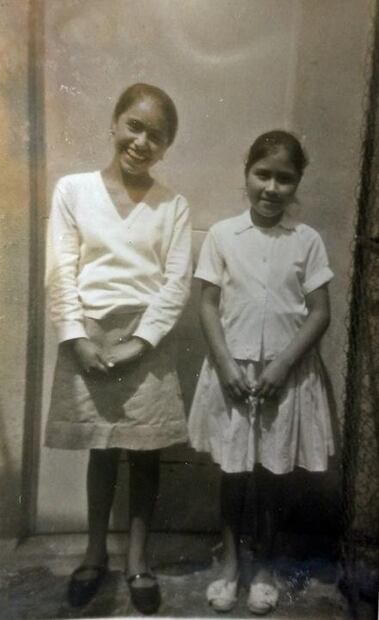
(Rosa together with a friend. The photograph was taken in the rooftop of the building where she worked in the Narvarte quarter)
According to Griselda Flores Hernández, who has a master degree in Pedagogy and teaches at the Faculty of Higher Studies of Aragón, the tradition of specialized care for children comes from Europe , particularly from royalty. These women were known as wet nurses, housekeepers, governesses, and nursemaids. The term “babysitter” is much more recent, according to Flores.
In Mexico, there are records of nannies since the Colonial era . During the 19th century and early 20th century, nannies were exclusive of aristocratic families. While parents were busy socializing, it was the nannies who looked after the smaller children.
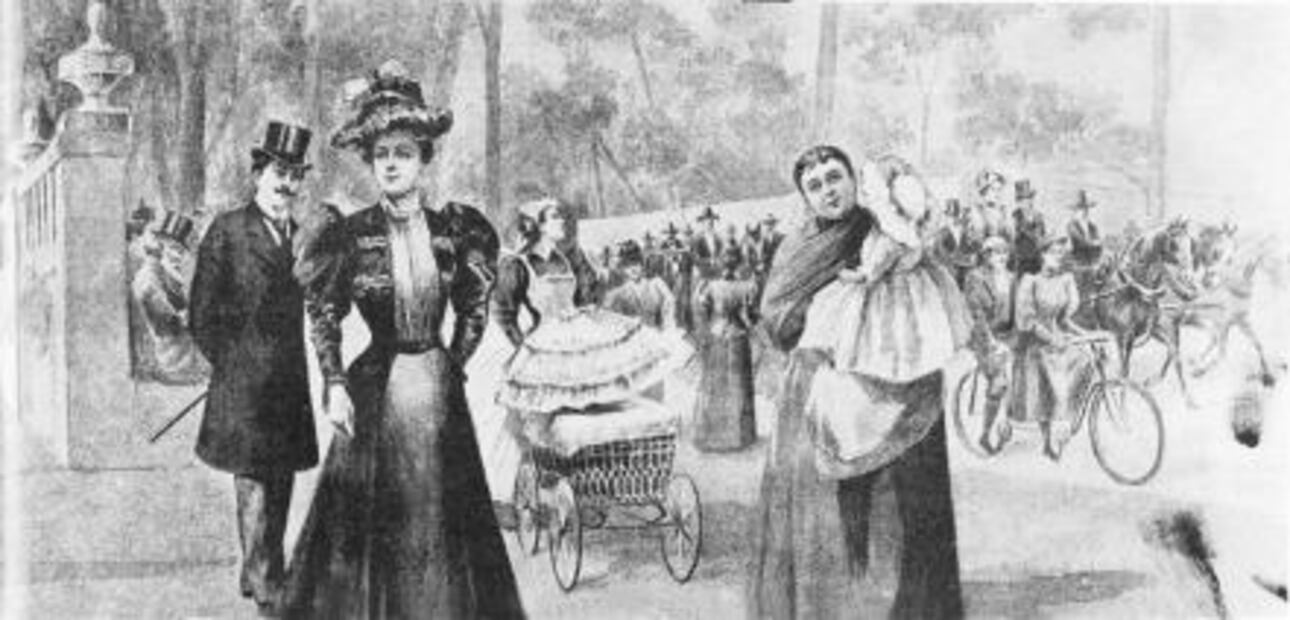
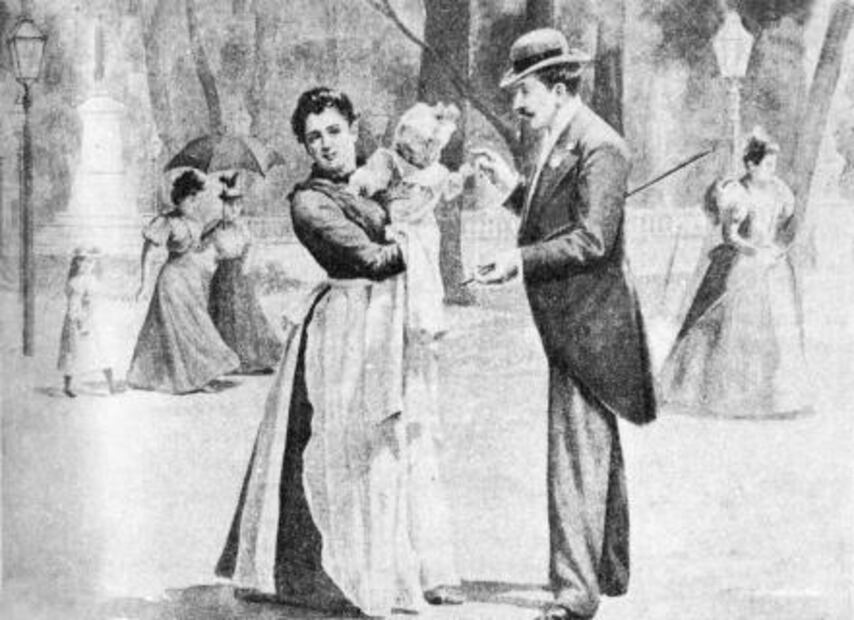
(In Mexico, it was common to see aristocrat families going for a Sunday walk along Paseo de la Reforma, bringing their nannies along – Illustrations taken from the book “6 Centuries of Graphic History in Mexico 1325-1976.”)
“Nannies from the early 20th century were, essentially, low-class migrant indigenous women, without an education. Proof of their experience was that many of them had over 10 children, or had looked after their siblings, and thus they were in high demand to look after the children,” clarifies Flores Hernández.
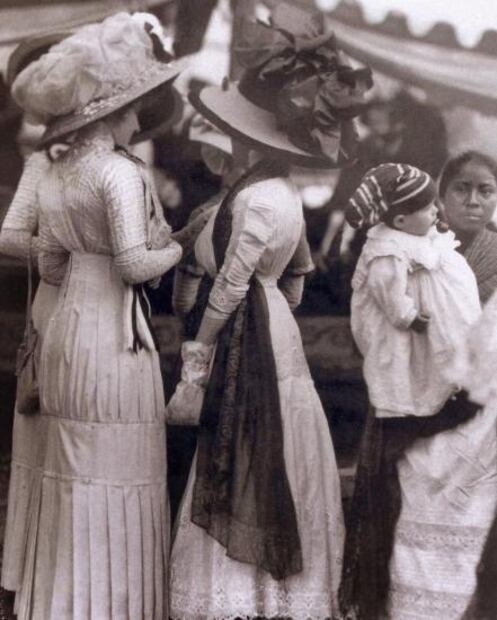
(Photo from 1910. As part of the celebrations for the centenary of the Mexican Independence, aristocrat women chat amongst themselves. On the right, a nanny carries a small child.)
However, with time and the necessities of the market, this kind of caretakers began to evolve. According to the UNAM professor: “in the 70's, women began to integrate into the l abor market and there was a need for people capable of looking after children during working hours,” explains Flores, adding that this changed the concept between being a nanny and a babysitter.
“The difference is that nannies were looked after the children 24 hours a day, while babysitters had flexible working hours and only looked after the children when the parents were away,” explains Griselda Flores.
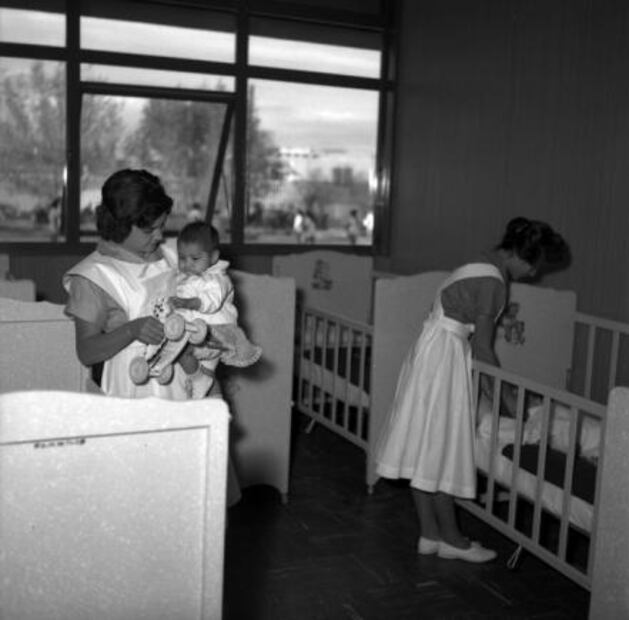
(A couple of nannies looking after children at a public daycare in the 60's)
Today, at 64, Rosa Montiel Islas still looks after children, but conditions have changed drastically since 1968. Her wages back then were MXN$80 a month, which her father collected. Then she earned between MXN$200 and MXN$300 a month during the 70's.
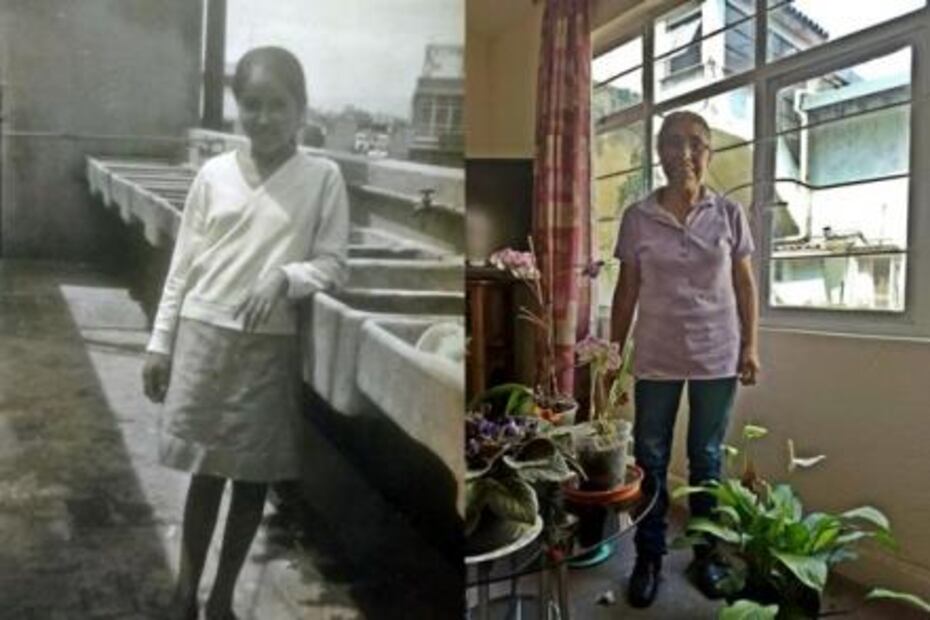
(In the left, Rosa, not older than 15, poses next to sinks at the building where she worked for over a decade. In the right, Rosa, now 64, recalls the stories she lived and lives, taking care of children.)
Currently, Rosa looks after two children, a boy of 7 and the boy's sister, a newborn. She has been working at that house a little of 7 years. In addition to babysitting the kids, she cooks and does some housework.
She earns MXN$200 to MXN$300 a day and works 3 or 4 days a week. While Rosa says strong bonds are established, Rosa doesn't live in the same house.
According to Griselda Flores, nannies of old looked after the children all the time, thus, they established deep bonds with their charges to the extent they were considered a second mother. Instead, bonds with babysitters today, while still strong, aren't the same as before.
Photos:
Newspaper library of EL UNIVERSAL. Mediateca of the INAH. Villasana Collection. “6 Centuries of Graphic History in Mexico 1325-1976."
Sources:
Newspaper library of EL UNIVERSAL. Interview with Rosa Montiel Islas. Interview with Griselda Flores Hernández, master degree in Pedagogy and professor at the Faculty of Higher Studies Aragón.
am
Noticias según tus intereses
[Publicidad]
[Publicidad]




